Low Cost Interior Design: Style on a Budget
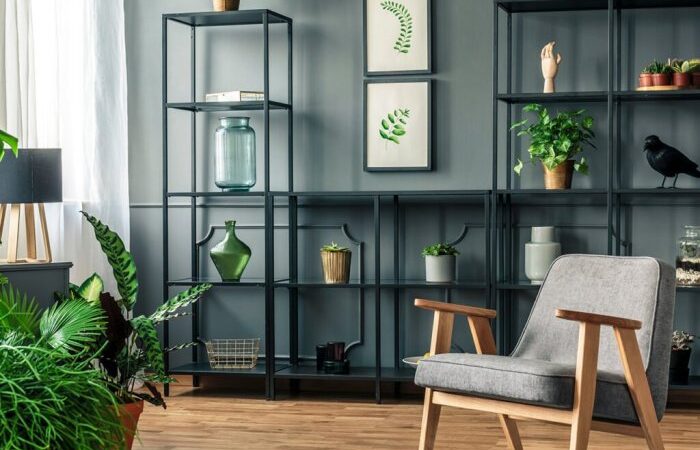
Low-cost interior design sets the stage for a captivating narrative, offering readers a glimpse into a world where style meets affordability. It’s a journey that proves you don’t need a hefty budget to create a beautiful and functional space.
This approach emphasizes practicality and accessibility, demonstrating that a stylish home is within reach for everyone.
From repurposing furniture to utilizing budget-friendly materials, low-cost interior design offers a wealth of creative solutions. This guide delves into the art of maximizing your budget, exploring design principles that enhance the perceived value of your space without breaking the bank.
You’ll discover how to leverage color, lighting, and textures to create a visually appealing and inviting atmosphere, all while embracing sustainable and eco-friendly practices.
Understanding Low-Cost Interior Design
Low-cost interior design is the art of creating stylish and functional spaces without breaking the bank. It’s about making smart choices, utilizing existing resources, and embracing creativity to transform your home into a haven that reflects your style.
The Essence of Low-Cost Interior Design
Low-cost interior design is about embracing practicality and accessibility. It’s not about sacrificing quality or style but rather finding clever ways to achieve a desired look within a budget. This approach emphasizes maximizing existing furniture, utilizing DIY projects, and incorporating affordable materials and finishes.
Successful Low-Cost Interior Design Projects
Numerous successful low-cost interior design projects showcase the power of resourcefulness and creativity. One such example is a living room makeover that involved repainting existing furniture in a bold color, adding inexpensive throw pillows, and incorporating vintage artwork. The transformation was remarkable, creating a vibrant and stylish space without significant expenditure.
Maximizing Budget and Achieving Style, Low-cost interior design
- Repurposing and Upcycling: Reimagine existing furniture with a fresh coat of paint, new hardware, or upholstery. This allows you to give old pieces a new lease on life, saving money and adding character to your space.
- DIY Projects: Embracing DIY projects can significantly reduce costs. Creating your artwork, building shelves, or adding decorative accents can personalize your home while saving money.
- Thrifting and Secondhand Shopping: Exploring thrift stores and secondhand markets can uncover hidden treasures at bargain prices. You can find unique furniture, accessories, and artwork that add personality and charm to your space.
- Mixing High and Low: Balancing high-end pieces with affordable finds can create a sophisticated and well-balanced look. Investing in a few statement pieces and complementing them with budget-friendly accessories can achieve a stunning effect.
Budget-Friendly Materials and Resources
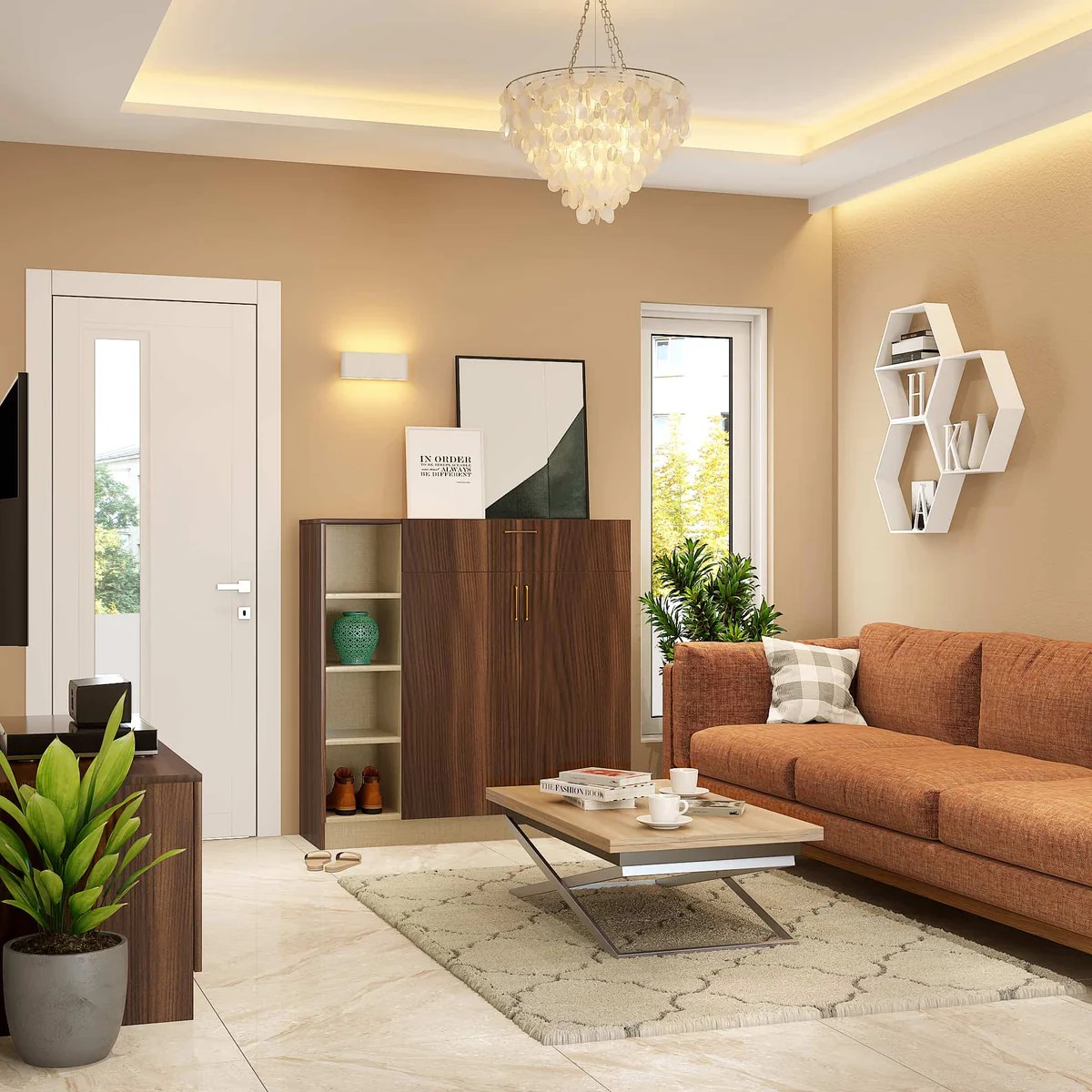
Embracing low-cost interior design doesn’t mean compromising on style or quality. You can create a beautiful and functional space by being resourceful and utilizing budget-friendly materials and resources.
Advantages of Budget-Friendly Materials
Choosing affordable materials can be a smart financial decision, but it also offers a unique opportunity to add character and personality to your space. Here are some key advantages:* Reclaimed Wood: Reclaimed wood offers a rustic charm and sustainable appeal. It can be used for flooring, furniture, wall accents, or even decorative elements like picture frames.
Repurposed Furniture
Repurposed furniture is a fantastic way to add vintage charm and a unique touch to your décor. You can find old furniture at flea markets, thrift stores, or even curbside and give it a new lease on life with a fresh coat of paint, new hardware, or upholstery.
DIY Projects
DIY projects can be incredibly rewarding and allow you to personalize your space. From building simple shelves to creating unique artwork, countless DIY options can save you money and add a personal touch.
Comparison of Budget-Friendly Materials
Here is a table comparing some common budget-friendly materials based on cost, durability, and aesthetic appeal:| Material | Cost | Durability | Aesthetic Appeal ||—|—|—|—|| Reclaimed Wood | Moderate | High | Rustic, natural, unique || Repurposed Furniture | Low to Moderate | Varies depending on condition | Vintage, eclectic, characterful || Paint | Low | Moderate | Versatile, allows for color customization || Fabric | Low to Moderate | Varies depending on type | Allows for texture and pattern variations || DIY Projects | Low | Varies depending on project | Personalized, unique, allows for creative expression |
Online Resources and Marketplaces
The internet is a treasure trove of resources for finding affordable furniture, décor, and building materials. Here are some popular online platforms:* Facebook Marketplace: Facebook Marketplace is a great place to find local deals on furniture, home décor, and building materials.
Craigslist
Craigslist is another popular platform for finding used furniture, home goods, and building materials.
Etsy
Etsy is a great resource for finding handmade and vintage furniture, décor, and art.
Chairish
Chairish offers a curated selection of vintage and antique furniture, décor, and lighting.
Wayfair
Wayfair offers a wide range of furniture, home décor, and lighting at affordable prices.
Overstock
Overstock is another great online retailer for finding discounted furniture, home décor, and building materials.
Creative Design Techniques
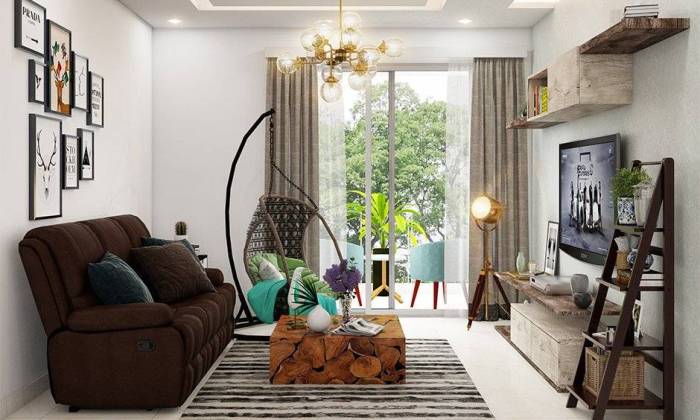
Low-cost interior design doesn’t mean sacrificing style or functionality. By understanding and applying creative design techniques, you can transform your space into a visually appealing and inviting haven without breaking the bank. These techniques focus on maximizing the impact of your design choices, emphasizing clever solutions and resourceful utilization of available resources.
Design Principles for Enhanced Value
Design principles can be leveraged to create a sense of spaciousness, luxury, and sophistication, even on a tight budget. Here are some key principles to consider:
- Balance: Achieve visual harmony by distributing elements evenly. This can be symmetrical (formal) or asymmetrical (informal), ensuring a sense of equilibrium.
- Emphasis: Draw attention to a focal point, such as a statement piece of furniture or a captivating artwork. This creates a visual hierarchy and adds interest to the space.
- Rhythm and Repetition: Create a sense of flow and continuity by repeating elements like patterns, colors, or shapes. This can unify the space and make it feel more cohesive.
- Scale and Proportion: Consider the size and relationship of objects in the space. Well-proportioned furniture and accessories enhance the overall aesthetic and functionality.
- Unity: Create a sense of wholeness by using elements that complement each other. This can be achieved through color palettes, materials, and design styles.
Maximizing Space and Functionality
Creating a functional and inviting space on a budget requires clever planning and utilizing cost-effective solutions.
- Multifunctional Furniture: Opt for furniture that serves multiple purposes, such as a sofa bed or a coffee table with storage compartments. This maximizes space and minimizes the need for additional pieces.
- Vertical Storage: Utilize vertical space with shelves, wall-mounted organizers, and hanging racks. This frees up floor space and keeps clutter at bay.
- Mirrors: Strategically placed mirrors can create the illusion of more space by reflecting light and visually expanding the room.
- Open Floor Plan: If possible, consider an open floor plan to create a sense of spaciousness and allow for greater flexibility in furniture arrangement.
- Light and Airy Colors: Lighter colors reflect light, making a space feel larger and brighter. White, beige, and pastels are excellent choices for creating a sense of openness.
Utilizing Color, Lighting, and Textures
Color, lighting, and textures play a crucial role in creating a visually appealing and inviting atmosphere. Here’s how to leverage these elements effectively:
- Color Palette: Choose a limited color palette for a cohesive look. Start with a neutral base and add pops of color through accents like throw pillows, artwork, or rugs. A well-chosen color palette can enhance the mood and atmosphere of a space.
- Lighting: Natural light is essential, so maximize window exposure. Utilize a combination of ambient, task, and accent lighting to create depth and dimension. Consider using affordable options like LED bulbs and lamps.
- Textures: Add visual interest and tactile appeal by incorporating different textures. This can be achieved through fabrics, rugs, throws, and even wall finishes. For example, a combination of smooth and textured fabrics can create a dynamic and inviting space.
DIY Projects and Upcycling
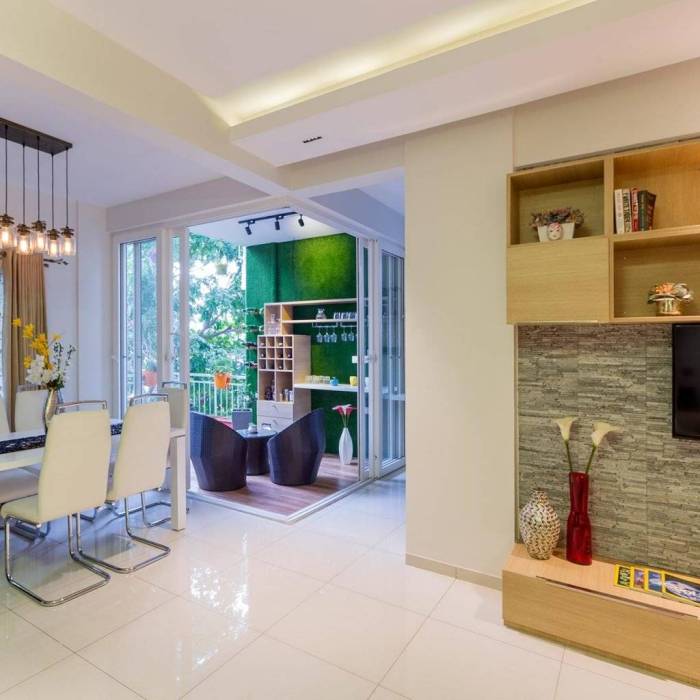
One of the most rewarding aspects of low-cost interior design is the ability to create unique and personalized pieces through DIY projects and upcycling. These practices not only save money but also add a touch of individuality to your space.
Transforming Old Furniture
Transforming old furniture is a popular and cost-effective way to refresh your home decor. A simple coat of paint, new hardware, or upholstery can give a piece a completely new look. Here are some step-by-step instructions for transforming old furniture:
- Preparation: Begin by cleaning the furniture thoroughly to remove dirt, dust, and any existing finishes. Sanding the surface will ensure that the new paint or stain adheres properly.
- Painting: Choose a paint color that complements your existing décor or adds a pop of color to the room. Apply several thin coats of paint, allowing each coat to dry completely before applying the next.
- Upholstery: If you’re working with a piece that has fabric, consider reupholstering it with a new fabric. Measure the existing fabric and purchase a new fabric that is the same size or slightly larger. Remove the old fabric and staple the new fabric to the frame.
- Hardware: Replacing the hardware, such as handles, knobs, and hinges, can instantly update the look of furniture. Choose new hardware that complements the style of the furniture and your overall décor.
Creating Custom Décor
Custom décor allows you to express your style and create unique pieces that reflect your personality. Here are some ideas for creating custom décor:
- Painted Wall Art: A simple canvas and acrylic paints can be used to create stunning wall art. Experiment with different colors, patterns, and textures to create your unique design.
- DIY Picture Frames: Repurpose old picture frames by painting them, covering them with fabric, or adding embellishments. You can also create your picture frames from wood or other materials.
- Handmade Throw Pillows: Sew your throw pillows using fabric scraps, old clothing, or purchased fabric. You can create a variety of patterns and textures to add interest to your sofa or bed.
Repurposing Everyday Objects
Repurposing everyday objects is a creative way to add personality and style to your space. Here are some ideas for repurposing everyday objects:
- Wine Bottle Vases: Empty wine bottles can be transformed into beautiful vases by simply cleaning them and adding a few embellishments, such as ribbon, paint, or twine.
- Tin Can Planters: Repurpose empty tin cans by cleaning them and adding a layer of paint. Plant small herbs, succulents, or flowers in the cans to create unique planters.
- Old Ladder Shelf: An old ladder can be repurposed into a stylish shelf by adding shelves or simply leaning it against a wall.
DIY Projects Table
| Project | Skill Level | Materials | Estimated Cost |
|---|---|---|---|
| Painted Wall Art | Beginner | Canvas, acrylic paint, brushes | $10-20 |
| DIY Picture Frames | Beginner | Old picture frames, paint, embellishments | $5-15 |
| Handmade Throw Pillows | Intermediate | Fabric, sewing machine, stuffing | $15-30 |
| Wine Bottle Vases | Beginner | Empty wine bottles, embellishments (ribbon, paint, twine) | $5-10 |
| Tin Can Planters | Beginner | Empty tin cans, paint, plants | $5-10 |
| Old Ladder Shelf | Beginner | Old ladder, shelves (optional) | $10-20 |
Sustainable and Eco-Friendly Options
Adopting sustainable and eco-friendly practices within interior design can significantly enhance the environmental impact of your project, while also promoting health and well-being. Choosing sustainable materials not only contributes to a greener planet but also often translates into cost-effective solutions.
Benefits of Sustainable and Eco-Friendly Materials
Sustainable and eco-friendly materials offer a range of benefits that go beyond aesthetics. Here are some key advantages:
- Reduced Environmental Impact: Sustainable materials minimize the use of harmful chemicals and emissions during manufacturing and disposal, reducing their overall carbon footprint.
- Improved Indoor Air Quality: Natural materials often release fewer volatile organic compounds (VOCs) than synthetic materials, contributing to healthier indoor air.
- Durability and Longevity: Sustainable materials are often more durable and long-lasting, reducing the need for replacements and minimizing waste in the long run.
- Cost-Effectiveness: While initial costs may vary, sustainable materials can be more cost-effective in the long run due to their durability and reduced maintenance requirements.
Sources for Recycled, Upcycled, and Locally Sourced Materials
Finding sustainable materials for your interior design project doesn’t require sacrificing style. There are numerous resources for sourcing recycled, upcycled, and locally sourced materials:
- Salvage Yards and Antique Shops: These locations offer a treasure trove of unique and reclaimed materials, such as salvaged wood, vintage furniture, and architectural elements.
- Online Marketplaces: Websites like Etsy, Craigslist, and Facebook Marketplace offer a diverse range of recycled and upcycled materials, including furniture, lighting, and decorative items.
- Local Craft Fairs and Markets: These events often feature local artisans and makers who utilize sustainable and recycled materials to create unique and beautiful pieces.
- Building Material Recycling Centers: These centers collect and process building materials, making them available for reuse in various projects.
Reducing Waste and Minimizing Environmental Impact
Conscious design choices can significantly reduce waste and minimize the environmental impact of your interior design project. Here are some key strategies:
- Plan and Measure Carefully: Accurate planning and measurements can help minimize material waste by ensuring you purchase only what you need.
- Choose Multifunctional Furniture: Opt for furniture that serves multiple purposes, reducing the need for separate pieces and minimizing clutter.
- Embrace Minimalism: A minimalist approach to design prioritizes functionality and simplicity, reducing the overall amount of materials used.
- Prioritize Repurposing and Upcycling: Instead of discarding old furniture or materials, consider repurposing or upcycling them to create unique and sustainable pieces.
Inspiration and Case Studies
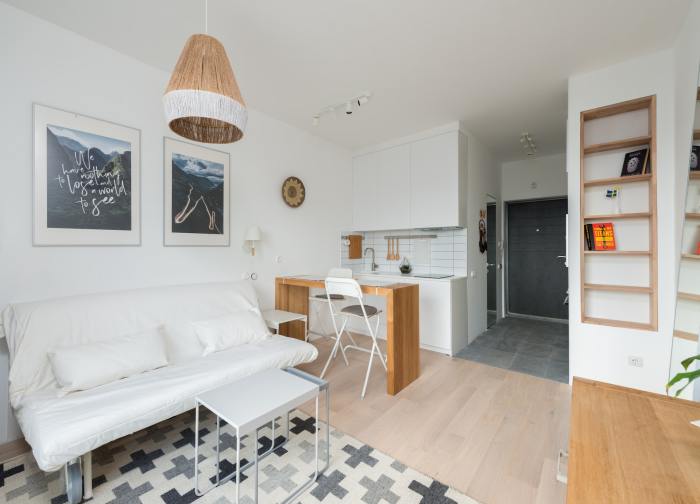
Turning your vision of a beautiful and functional home into reality doesn’t have to break the bank. Low-cost interior design proves that creativity and resourcefulness can transform any space into a stylish and welcoming haven. This section explores inspiring examples of budget-friendly design projects, showcasing how resourceful choices and clever techniques can yield remarkable results.
Case Study: A Cozy Living Room Transformation
This living room makeover demonstrates how to create a warm and inviting atmosphere without overspending. The homeowner, a young professional living in a small apartment, wanted to upgrade her living space but had a limited budget. She opted for a neutral color palette, using affordable paint and simple, yet stylish furniture pieces.
To add visual interest and texture, she incorporated a patterned rug, throw pillows, and a few strategically placed house plants.
- Color Palette: The walls were painted in a soft beige, creating a calming and neutral backdrop. The sofa, a vintage piece reupholstered with a durable fabric, was chosen in a warm gray hue. The rug, a vibrant geometric pattern in shades of blue and gray, added a pop of color and texture.
- Furniture: The sofa was a thrift store find, reupholstered with a durable fabric. The coffee table was made from a repurposed wooden crate, painted white, and topped with a piece of glass. The end tables were simple, affordable pieces from a local furniture store.
- Decor: Throw pillows in various textures and patterns were used to add comfort and visual interest. A collection of vintage books and a few decorative candles were placed on the coffee table, adding warmth and personality. House plants, including a fiddle leaf fig and a snake plant, provided a touch of nature and improved air quality.
The homeowner saved significantly by using a combination of thrifting, DIY projects, and strategic use of color and texture. The final result was a stylish and comfortable living room that reflected her style and provided a welcoming atmosphere for entertaining guests.
Final Conclusion: Low-Cost Interior Design
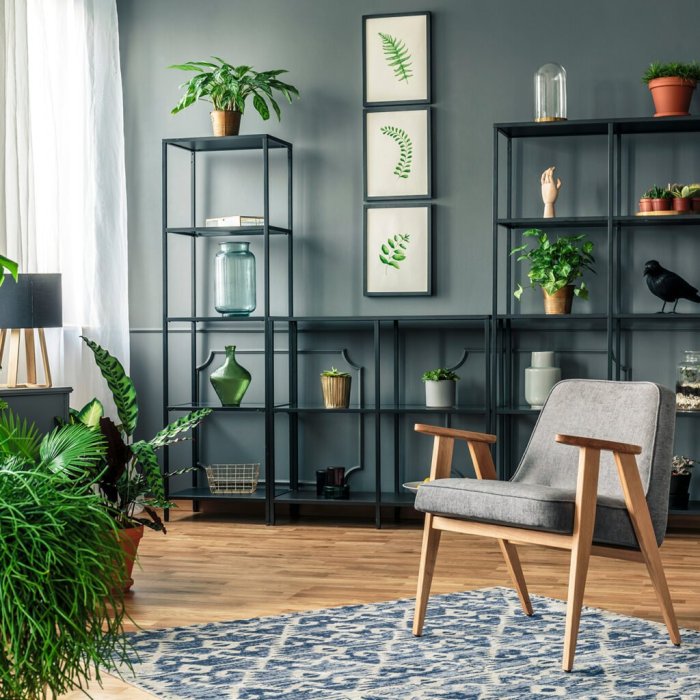
Ultimately, low-cost interior design is about embracing creativity and resourcefulness. It’s about finding joy in the process of transforming your space, making it a reflection of your style and values. Whether you’re a seasoned DIY enthusiast or a design novice, this approach empowers you to create a home that is both stylish and budget-friendly.
Comments are closed.